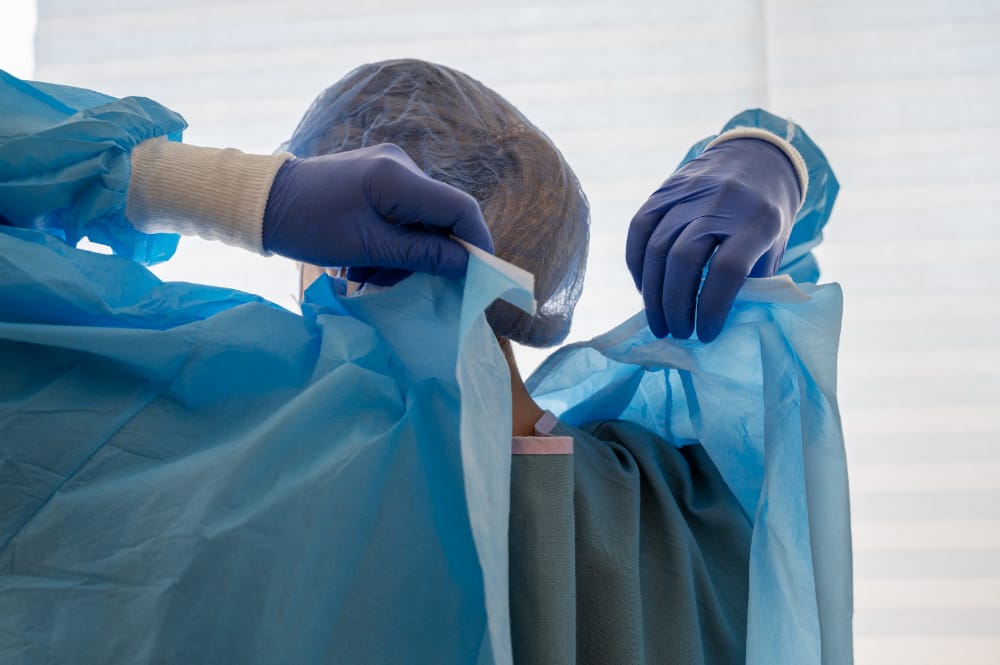Clinical negligence in emergency rooms is a critical issue that can have life-altering consequences. When individuals seek emergency medical care, they are often at their most vulnerable, and the level of care they receive can significantly impact their recovery or even survival. In this article, we will delve into the various types of clinical negligence that can occur in emergency rooms, the unique challenges posed by A&E situations, and the importance of addressing these issues to ensure the well-being of patients.
Understanding Clinical Negligence in Emergency Rooms
Clinical negligence, often referred to as medical malpractice, is a serious concern within the healthcare industry. This negligence can manifest in various forms, and emergency rooms (often referred to as Accident & Emergency or A&E in the UK) are no exception. Let’s explore the types of clinical negligence that can happen in these high-pressure medical settings.
Misdiagnosis and Delayed Diagnosis
One of the most common forms of clinical negligence in emergency rooms is misdiagnosis or delayed diagnosis. Emergency room physicians and staff are often faced with a barrage of patients suffering from a wide range of medical conditions. In the rush to provide quick care, there’s a risk of overlooking vital information, which can lead to incorrect or delayed diagnoses. This can have dire consequences, as timely treatment is often critical in emergency situations.
Medication Errors
Medication errors are another prevalent form of clinical negligence in emergency rooms. The chaotic nature of A&E, with patients arriving in rapid succession and varying levels of severity, can lead to mix-ups in medication administration. Incorrect dosages, improper drugs, or the failure to consider patient allergies can all contribute to medication errors.
Surgical Errors
In extreme cases, clinical negligence in emergency rooms can extend to surgical errors. While emergency surgery is sometimes necessary to save a patient’s life, the haste and stress of an A&E situation can lead to mistakes during surgical procedures. These errors might include incisions made in the wrong location, damage to vital organs, or complications arising from improper suturing.
The Pressures of A&E Situations
Understanding the types of clinical negligence that can occur in emergency rooms is just one part of the equation. To address this issue effectively, we must also consider the unique pressures and challenges that A&E staff face on a daily basis.
High Patient Volume
Emergency rooms are notorious for their high patient volumes. Every day, patients with varying degrees of urgency flood into these departments seeking immediate care. The sheer number of patients can strain the resources available, leading to time constraints and overcrowding. In such an environment, healthcare providers may inadvertently prioritise speed over thoroughness, increasing the risk of clinical negligence.
Limited Time for Evaluation
Patients in the A&E often require rapid assessment and treatment. While speed is crucial, it should never come at the expense of accurate diagnosis and care. The limited time available for evaluating each patient can lead to shortcuts in medical assessment, which can result in missed details and misdiagnoses.
Stress and Fatigue
A&E staff work under extremely stressful conditions. They must make critical decisions rapidly, often dealing with life-and-death situations. The pressure and stress can lead to mental fatigue, making healthcare providers more susceptible to errors.
Lack of Patient History
In many emergency situations, healthcare providers have limited access to a patient’s medical history. This lack of information can hinder accurate diagnosis and treatment. For example, a patient might have a pre-existing condition that significantly impacts their current health status, but without access to their medical history, the medical team may remain unaware.
Addressing Clinical Negligence in Emergency Rooms
Addressing clinical negligence in emergency rooms is a multifaceted challenge that involves various stakeholders, including healthcare professionals, administrators, policymakers, and patients themselves.
Ongoing Training and Education
Healthcare providers in A&E departments must receive ongoing training and education to stay updated with the latest medical practices and procedures. This training should also encompass the identification of clinical negligence risks and strategies for minimising errors.
Improved Systems and Procedures
Hospitals and clinics can play a crucial role in addressing clinical negligence by implementing improved systems and procedures. This includes streamlining patient information access, utilising electronic health records, and establishing clear communication channels between medical staff.
Patient Advocacy
Patients must advocate for their own care. If a patient feels that their condition has been misdiagnosed or they have received substandard care, they should speak up and seek a second opinion. Encouraging patient advocacy can help prevent and address clinical negligence.
Legal and Ethical Oversight
Legal and ethical oversight of clinical negligence is essential to ensure accountability. In the UK, regulatory bodies such as the General Medical Council (GMC) and the Nursing and Midwifery Council (NMC) play a critical role in monitoring healthcare professionals’ conduct. Patients who believe they have been victims of clinical negligence can file complaints with these bodies.
Making a Clinical Negligence Claim with National Claims
At National Claims, we understand the significant impact that clinical negligence in emergency rooms can have on patients and their families. If you or a loved one has been a victim of clinical negligence in an A&E department, we are here to guide you through the process of making a claim for compensation.
Our experienced team of legal professionals specialises in clinical negligence cases. We are committed to helping you receive the compensation you deserve for the physical, emotional, and financial toll that clinical negligence can take on your life.
Consultation
The first step in making a clinical negligence claim with National Claims is to schedule a consultation with one of our experts. During this consultation, we will listen to your story, gather information about your case, and provide you with an initial assessment of its strength. We understand that every case is unique, and we treat each client with the utmost care and respect.
Investigation
Once we have established that your case has merit, our team will begin a thorough investigation. We will collect medical records, consult with medical experts, and gather evidence to build a strong case on your behalf. Our goal is to leave no stone unturned in ensuring that you receive the compensation you deserve.
Legal Representation
National Claims will provide you with expert legal representation throughout the entire claims process. Our team of solicitors is experienced in handling clinical negligence cases and will work tirelessly to protect your rights and advocate for your compensation.
Support and Care
At National Claims, we understand the emotional toll that clinical negligence can take on victims and their families. Throughout the process, we offer support and care to help you navigate the legal aspects of your case while focusing on your physical and emotional recovery.

Conclusion
Clinical negligence in emergency rooms is a complex issue that requires attention from both healthcare providers and patients. Understanding the various types of negligence that can occur, as well as the unique challenges of A&E situations, is a vital first step in addressing this problem. By promoting ongoing training, improved systems, patient advocacy, and legal and ethical oversight, we can work together to minimise the occurrence of clinical negligence in emergency rooms and ensure the safety and well-being of patients.
If you or a loved one has been a victim of clinical negligence in an emergency room, National Claims is here to support you in seeking the compensation you deserve. Our dedicated team of experts will guide you through the process, providing legal representation and the care you need during this challenging time. Your well-being is our priority, and we are committed to helping you on your journey to recovery.
Contact us today to get a start on your claim and speak to one of our claims specialists.
Click below to see why we are one of the most trusted claims management companies in the UK.

We’re proud of our excellent customer reviews
We thrive on delivering exceptional service and ensuring our clients’ satisfaction. Don’t just take our word for it. Check out some of our independent reviews to see what our clients have to say.
Excellent

This firm is excellent, they sorted out my car pay out and injury claim very fast, they always communicate with you all the time.

My accident case was dealt with confidence and with great result of the outcome, especially James kept me informed all the time.

I was very impressed at the way my inquiry was treated. I was listened to attentively and everything I needed to know was explained to me.






